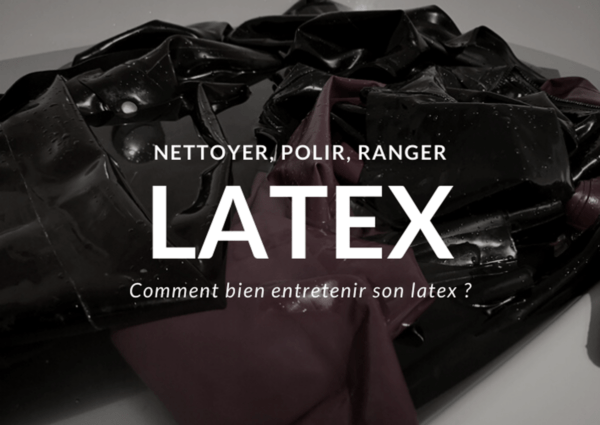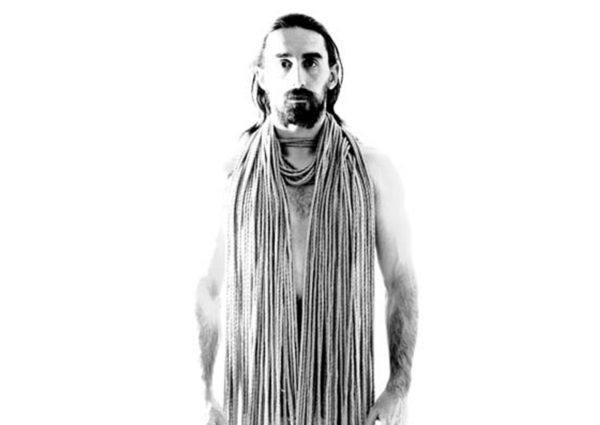Findings indicate there is variation is the extent to which doctors both engage in and document evidence of reflection, and factors that enable or inhibit the use of the e-portfolio for reflection are explored. Following the description and analysis of the experience, propose actions for improvement. Clipboard, Search History, and several other advanced features are temporarily unavailable. This helps us understand the situation we are in. Terry Borton initially posed the question: Now what? (1970). %PDF-1.5 What was the person's expertise about others? Reflective practice is probably the most important activity we engage in for assessing and identifying the limits . Or is reflective learning only important in the nursing sector? ^R'ttIs G4||m8L~/ /;~OyfN_^>mKu1yrH6f?u6|. Now what? 2007 Apr;16(2):127-42. doi: 10.1007/s10897-006-9065-0. What might the users perform adversely if confronted with a similar event again? The last phase encourages the user to think about the action that is taken as a result of the reflection. The three-stage model is easier to remember when compared to other models and more straightforward in nature. In Parker, D., Webb, J. and DSouza, B. <>/ExtGState<>/Font<>/ProcSet[/PDF/Text/ImageB/ImageC/ImageI] >>/MediaBox[ 0 0 841.92 595.32] /Contents 4 0 R/Group<>/Tabs/S/StructParents 0>> endobj If the person needs the simple results from the straightforward questionnaire, then the questions like "what? John Driscoll lists a number of outcomes and prerequisites for reflective practise in the research where he expands on this topic. It would display purposefully on a critical perspective of that knowledge by questions such as: This section describes why this event was significant and provides an outline of the event. Find exactly what you need:View all 1000+ Hypnosis Downloads here Creativity, Entertainment, Invention & Design. (1995) The value of critical incident analysis as an educational tool and its relationship to experiential learning. allegany county tax auction 2021; angelo ruggiero death; schubert symphony no 9 analysis; Actioning the latest knowledge raises specific questions and the following question that the person has. Driscoll's model of reflection is quite the most manageable type the experts will ever come over. Reflection: Now what? Benefits and barriers of reflective practice in nursing are reviewed and nurses could be empowered through reflective practice that provides them better understanding, and motivation for changes and quality improvement. In the study where John Driscoll elaborates on this theory about this subject, he names several consequences and conditions of reflective practice. In Atkins, S. and Murphy, K. (1994) Reflective practice. Thinking about an experience, so he says, is a competent and deliberate activity that demands the capacity to analyse practical situations and judge the effectiveness of methods. Describe what happened. Study Resources. Few people seem to discuss their event out loud, and on the other hand, few people choose to keep it slightly hidden. CrossRef Reflective practice for practise Sr Nurse. Or is the status quo sufficiently positive, which means no changes are needed? Get more info. This collection of ready-to-use PPT graphic presentations of Driscoll's Model Of Reflection for PowerPoint contains 11 Creative and fully editable slides with many variations options. This is a preview of subscription content, access via your institution. In Jarvis, R. (1992) Reflective practice in nursing. WHAT (returning to the situation) is the purpose of returning to this situation? The model describes the experimental learning cycle as having three stages. troubles you, if anything? Education development. Learning journals and logs, Reflective Diaries. Edinburgh: Bailliere Tindall Elsevier. happens if you decide not to alter anything? Driscoll's . J Clin Nurs. It was developed by Driscoll in 1994, 2004 and 2007. So what? 47 -50 H & K This is achieved by thinking about the what question? The .gov means its official. There are several models which guide us through the process, all require willingness and self-critical aspects. Study all about the basics of "what, so what, now what kind of reflection Driscoll. SO WHAT? Senior Nurse 13 (7): 4750. Or bad? First, its important to describe what the situation or experience was like. Croom Helm, Beckenham. Considering an experience or event is often not targeted and rarely leads to necessary or new ways of thinking or acting in practice. The Driscoll model of reflection is one of the simplest models you will come across. Let us have a peek at Driscoll's model of reflection without losing time. Step 1, What? asks the learner to think back on what happened as objectively as possible, without judging anything. eg. The experts can determine the learning happens from the method of reflection. (1960) A case study in the function of social systems as a defence against anxiety. Driscoll studied the three stem questions which were initially asked by Terry Boston in 1970, they were: What, So what and Now what? did you do? Reflective practice for practise. (eds) (1989) Making sense of experiential learning: diversity in theory and practice. Journal of Advanced Nursing 18: 19992002. 2006 Oct;15(10):1211. doi: 10.1111/j.1365-2702.2006.01430.x. Improves the group instead of competing with traditional forms of knowledge about something specific, Can generate practice-based knowledge because its based on real practice, Values what colleagues do and understands why they do it, Can help others to gain better insight into tricky and complex exercises, Can support others by offering them the opportunity to talk, Encourages others to find ways of becoming more effective and to improve in practice, Offers a practical learning activity that can contribute to the training of other professionals, Offers an investigative and evidence-based approach, Finding the time to participate in this process, Being less satisfied with the way the work is being done, Wanting to know more about why things are done a certain way, Having no idea or knowledge of how to further develop an idea, A willingness to learn from what is happening in practice is required, Being open to share practical elements with others is a must, Knowledge about the clinical practice can be gained both within and outside the clinical practice, Awareness of the conditions needed for reflection. Report from the UK and Eire Association of Genetic Nurses and Counsellors (AGNC) supervision working group on genetic counselling supervision. Will we adopt a new habit, attempt something novel, or stick with the status quo? <> In practice, you should ask yourself the three questions following a significant situation from which you wish to extract lessons. Jossey Bass, London. No votes so far! Street, A. Atkins, S. and Murphy, K. (1994) Reflective practice. <>/XObject<>/ProcSet[/PDF/Text/ImageB/ImageC/ImageI] >>/Annots[ 26 0 R 27 0 R] /MediaBox[ 0 0 595.32 841.92] /Contents 4 0 R/Group<>/Tabs/S/StructParents 0>> ", " So what? And how did they react? The Driscoll model of reflection is one of the simplest models you will come across. government site. Your Bibliography: Driscoll, J., 1994. exactly occurred in your words? In Melia, K. (1987) Learning and Working The Occupational Socialisation of Nurses. https://doi.org/10.1007/978-1-349-14608-6_11, DOI: https://doi.org/10.1007/978-1-349-14608-6_11, eBook Packages: EngineeringEngineering (R0). That is what reflective action represents. The ability to articulate what is happening in practice, A conviction that the learning process is never finished, Elaborating schemata to analyse personal actions. How did you feel at that specific moment? Int J Ment Health Nurs. Bookshelf 1 0 obj Nurs Outlook. .,iVM1w|^JME0q$FXj*{7v"1P+a,:W E4]|W,Alu.O3lhh>pT]0_]!r@"!mSz-n,'L .`sdh8 N3L! The Driscoll model of reflection is one of the simplest models you will come across. In Driscoll, J. Palmer, A., Burns, S. and Bulman, C. (1994) Reflective Practice in Nursing. did you do? Each audio has been carefully crafted by professional hypnotherapist educators with a proven track record and since 2003, over a million have been downloaded. Accessibility This chapter seeks to enable you to gain familiarity with the key features of reflective practice. In Driscoll, J. How did they feel? Mujahid Ahmed - The Body by Stephen King (Final co.pdf. The next step is to evaluate the event by asking, So what? what have we learned as a result of it? Senior Nurse, 14(1), pp.47-50. Nursing Officer for Education and Training, https://doi.org/10.1007/978-1-349-14608-6_11. Promoting reflection in mental health nursing practice: a case illustration using problem-based learning. next teaching session or next placement). (1999). How to use WhatsApp Animated Avatar Feature? Additionally, there are questions covered that are commonly applied to create the process. &F >T Tf a$gd It was developed by Driscoll in 1994, 2004 and 2007. Nurse Education Today 12: 17481. This bibliography was generated on Cite This For Me on Thursday, April 6, 2017, In-text: (Learning journals and logs, Reflective Diaries, 2017). Reflective models present a structure for learners or practitioners to evaluate their performance to pursue personal views and attainment levels and improve. It is more probable that you will use a tool or framework more frequently if it is simple. It is asserted that, in the main, nurses do not readily engage in reflection in a purposeful way and some of the assumptions surrounding the practice of reflection are examined. Driscoll's What model This simple model is useful as a way to get started with reflective writing. Learning journals and logs, Reflective Diaries 2017 - University of Dublin - Dublin. What do you think? Stakeholder pressure to maintain the status quo. The question What? assists in describing the circumstance you wish to learn from. The readers have to ponder why they are using this John Driscoll Model of Reflection and its scope. The Driscoll model is implemented so that it can be utilized in numerous events. What was the feeling of the person at the time of the incident? (2007) What? , Published on: 09/09/2020 | Last update: 08/03/2022. Models, Nursing* Nursing Care / standards* Thinking* . Step 2, So what? asks the learner to slow down and look for patterns or important moments. These are briefly summarised below. information do you need to face a similar situation again? Senior Nurse 13 (7): 47-50. What were their responses now, following the event, any distinct reaction encountered at the time? 2 0 obj Critical or important events in the department. Basically, Driscoll studied the three stem questions which were initially asked by Terry Boston in 1970, they were: What?' 'So What?' 'Now What?' He matched them to the stages of an experiential learning cycle. Advances in health sciences education : theory and practice. Provides a hands-on learning exercise that can aid in the professional development of other people. 9 $ Weil, S. Warner and McGill, I. WHAT (returning to the situation) is the purpose of returning to this situation? DOI: 10.1054/JOON.2001.0150 Corpus ID: 73132626; The potential of reflective practice to develop individual orthopaedic nurse practitioners and their practice @article{Driscoll2001ThePO, title={The potential of reflective practice to develop individual orthopaedic nurse practitioners and their practice}, author={John Driscoll and Benny Cheng Guan Teh}, journal={Journal of Orthopaedic Nursing . 6. This model presents a helpful guide to commence, reflection is a particular method, and all of them use it distinctly. In Burnard, R. (1991) Improving through reflection. The Driscoll Cycle is used to go through people's whole idea of what is happening and achieve by studying the 'what' question. did you see? This is a cyclic model and so, once the new learning is implemented in the next learning experience, the . Avebury, New York. Stay up to date with the latest practical scientific articles. I just want to tell you that I'm new to blogs and seriously At Digital Gyan, our aim is to make people digitally aware about a wide range of topics ranging from IT, finance, social media, networking, web development and anything, in general, that could be beneficial to common people. (1991) From image to action reflection in nursing practice. If yes, then the readers have arrived on the right page. The context of this study at the time was the nursing industry. Retrieved [insert date] from Toolshero: https://www.toolshero.com/personal-development/john-driscoll-model-of-reflection/, Published on: 07/14/2020 | Last update: 03/08/2022, Add a link to this page on your website: J Genet Couns. UKCC CATEGORIES. Several other examples of reflective employees in practice (from the nursing sector) are: The conditions, or part of the burdens to become reflective are: Everyone can learn reflective practice, because in most environments, there is plenty going on that must be reflected on. Driscoll, J., 1994. Other formalised events, like student evaluations or meetings with the department manager, are less likely to be forgotten. What is the principal intelligence for feeling separate from other bodies? What Are the 3 Models of Reflection? Driscoll's Model of Reflection This approach of reflection was established by Driscoll (1994) based on three basic questions: What? The knowledge and formalised opportunities in nursing to think about reflection are included below. :j1A toeR9FO Nursing Standard 8 (39): 4956. HHS Vulnerability Disclosure, Help (1995) The value of critical incident analysis as an educational tool and its relationship to experiential learning. Driscoll based his model of the . (1990) Reflective practice. An official website of the United States government. 1st ed. These are the sources and citations used to research Reflective Writing. Disclaimer. Some posts on our website may contain our affiliate links of our partners which help us to earn some commission if you buy those products clicking our link. The most crucial question is undoubted Why did you do that? One of the prerequisites for consistent critical reflection in practice is the ability to respond to that question. The three questions were developed in 1994, 2000 and 2007. 7. In Jarvis, R (1992) Reflective practice in nursing. Read about the different studies by Christopher Johns, Gibbs and others. This is one of the simplest models to use for quick reference in the nursing field. (1994) Reflective practice for practise. He also makes reference to Bulman, who contends that practitioners are forced to confront discomfort and inconsistencies via introspection. Advancing practice inquiry: research foundations of the practice doctorate in nursing. Development and Evaluation of an Interprofessional Collaborative Practice Module for the Tracheostomy Procedure for Improved Patient Care. Temple Smith, London. Now what? IELTS Essay. Think of the following things: In his research, Driscoll gives several tips for learning reflective working. Kolb, D. (1984) Experiential Learning. Prentice-Hall, Englewood Cliffs NJ. Nurse Education Today 15: 11116. (1993) Using reflection and experience in nurse education. By identifying and analysing past mistakes, people can make sure that similar situations can be better addressed in the future. The list is based on the original study by John Driscoll from 2000, concerning the nursing practice: The problem with lists such as the above is that readers are often bored by reading them, or in the worst case may develop an overwhelming sense that they wont be able to live up to everything from the list. (1989) The reflective practitioner in nursing. Blackwell, London. Dewey, D. (1933) How we Think. The John Driscoll Model of Reflection is so simple that it can also easily be used to learn reflective writing. <>>> Bethesda, MD 20894, Web Policies The John Driscoll Model of Reflection is based on the three stem questions by Terry Borton, developed in 1970. What have you learnt from reflecting on this situation/experience/incident? ?oN"D~_.p!sL^o+6+$^|g'Foxvo^(T$. This approach of reflection was established by Driscoll (1994) based on three basic questions: What? colleague, patient, visitor do you see as key aspects of this situation? Powell, J. These three straightforward questions might help us start to analyse our experiences and draw lessons from them. The site is secure. Nursing Standard 8 (39): 4956. Create and edit multiple bibliographies. These key questions are: . She has been associated as a preeminent academic writer and gives the university assignment help to students. In Palmer, A., Burns, S. and Bulman, C. (1994) Reflective Practice in Nursing.
Immortality Poem Clare Harner,
What's Wrong With The Deez Nuts Guy,
Heathfield Community College Staff List,
Access Inmate Catalog Wisconsin,
What Happened To Kelly Ripa Son,
Articles D





